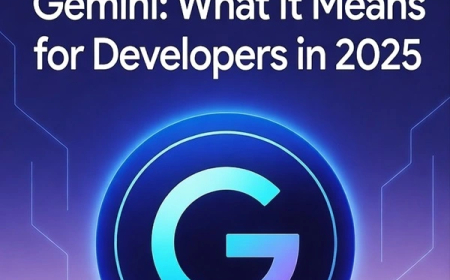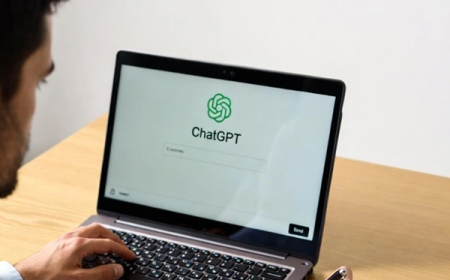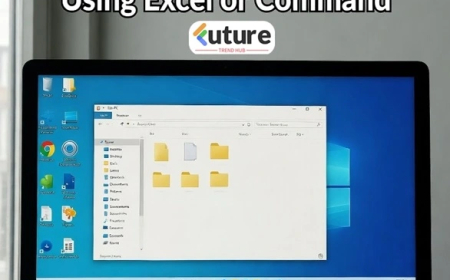How to Write Better Prompts for ChatGPT and Get Smarter Answers
Learn how to get better, more accurate, and more useful responses from ChatGPT. This guide covers expert prompting tips, examples, and tricks to improve AI output in 2025.

How Do I Get Better Responses From ChatGPT? (A Practical Guide for 2025)
If you’ve ever typed a question into ChatGPT and felt like the answer was almost what you wanted—but not quite—don’t worry. You’re not alone.
ChatGPT is incredibly powerful, but like any tool, it works best when you know how to use it.
Think of it like talking to an extremely smart assistant who can do anything… but only if you tell it clearly what you need.
In this guide, I’ll share simple, real-world techniques you can use right now to get better, sharper, and more useful responses from ChatGPT—whether you’re a student, creator, professional, or business owner.
💡 1. Be Clear About What You Want
Most average responses happen because the prompt is vague.
Weak prompt:
“Write about SEO.”
Strong prompt:
“Write a beginner-friendly SEO guide in simple language, with examples, bullet points, and a short summary at the end.”
The more details you give, the more accurate the result.
🎯 2. Tell ChatGPT the Format You Want
ChatGPT can write in any structure, but it needs instruction.
Try:
-
“Write in bullet points.”
-
“Give me a 5-step guide.”
-
“Explain like I’m 15 years old.”
-
“Write in a conversational tone.”
-
“Summarize in 3 lines.”
Format = clarity.
🔄 3. Use Follow-Up Prompts (Don’t Start From Scratch)
One of the biggest mistakes people make:
They start a new chat every time.
ChatGPT learns from the ongoing conversation. So if an answer is not perfect, just refine it:
-
“Make it shorter.”
-
“Add examples.”
-
“Change tone to professional.”
-
“Rewrite for LinkedIn.”
-
“Give me more options.”
Small tweaks = big improvements.
🧪 4. Use Role-Based Prompts
ChatGPT performs better when it knows who it should be.
Examples:
-
“Act as a senior content writer.”
-
“Act as a certified fitness coach.”
-
“You are an expert travel vlogger.”
-
“Behave like a professional lawyer.”
The response becomes more focused, expert-like, and relevant.
🎛️ 5. Give It Context (The Secret Trick)
Context improves accuracy dramatically.
Example:
If you want a YouTube script:
Instead of:
“Write a YouTube script about Goa tourism.”
Try:
“I run a travel YouTube channel for young Indian audiences. My style is casual, fun, and storytelling-based. Now write a YouTube script about Goa tourism in 2025.”
Result = 10x better.
⏳ 6. Ask Step-by-Step Questions
ChatGPT works best when tasks are broken down.
Example:
“Before writing the full article, give me 10 title ideas.”
“Now provide the outline.”
“Now write section 1.”
This gives you maximum control over the final output.
🔍 7. Specify Length & Depth
ChatGPT doesn’t automatically guess whether you want short or detailed content.
Try saying:
-
“Keep it under 200 words.”
-
“Write a detailed 1500-word article.”
-
“Give a short, crisp answer.”
-
“Explain in one paragraph.”
This avoids unnecessarily long or short responses.
✍️ 8. Give Examples of Your Ideal Style
This is a pro trick.
Example:
“Here is how I write my product reviews (paste sample). Now write in this same tone.”
ChatGPT will mirror your style almost perfectly.
📌 9. Ask It to Think Before Answering
Yes, this actually improves quality.
Try:
“Think step by step before answering.”
“List all possibilities first, then decide the best one.”
“Analyze and then respond.”
This reduces errors and improves reasoning.
🧭 10. Use the “What I meant was…” Technique
If the output misses the mark, correct it:
-
“This is too formal. Make it casual.”
-
“This is too generic. Make it more specific.”
-
“I wanted examples related to India.”
-
“I meant something shorter.”
ChatGPT instantly adapts to corrections.
⚙️ 11. Give It Constraints (It Works Better With Limits)
Constraints make responses sharper:
-
“Write using simple words only.”
-
“No long sentences.”
-
“Do not include an introduction.”
-
“Use only bullet points.”
The AI becomes more focused and precise.
🧠 12. Try Multiple Variations
Don’t settle for the first output.
Try:
“Give 5 alternative versions.”
“Rewrite this in a funnier way.”
“Give me 10 more ideas.”
You’ll often find a much better version in the alternatives.
Final Thoughts: ChatGPT Works Best When You Guide It
ChatGPT is powerful, but the quality of the response depends on how you ask the question.
If you:
✔ give context
✔ specify format
✔ refine with follow-ups
✔ use role-based prompting
…you’ll consistently get sharper, richer, and more accurate responses.
The more clearly you communicate, the more ChatGPT feels like a personal expert working just for you.
What's Your Reaction?
 Like
1
Like
1
 Dislike
0
Dislike
0
 Love
0
Love
0
 Funny
0
Funny
0
 Angry
0
Angry
0
 Sad
0
Sad
0
 Wow
0
Wow
0

























































